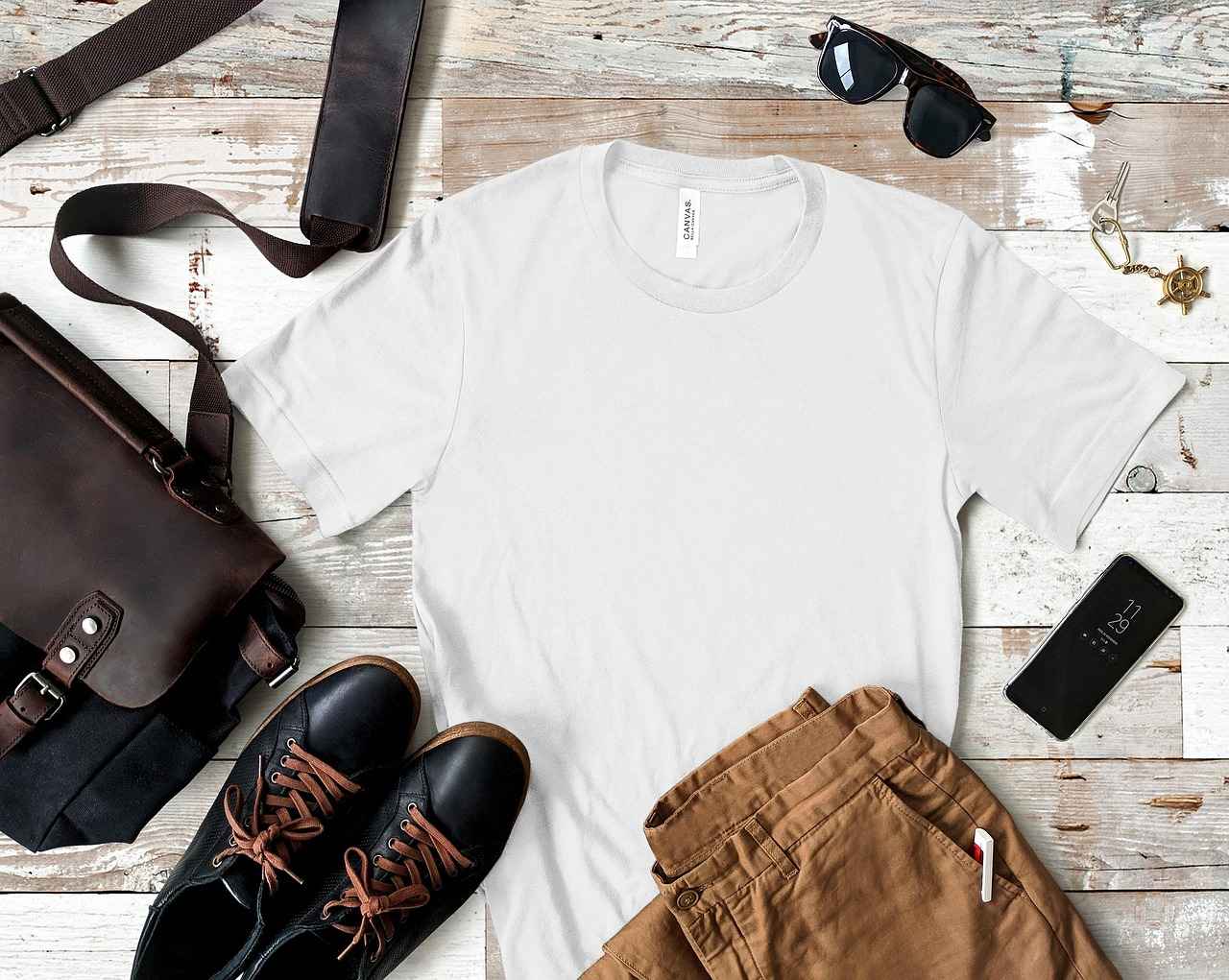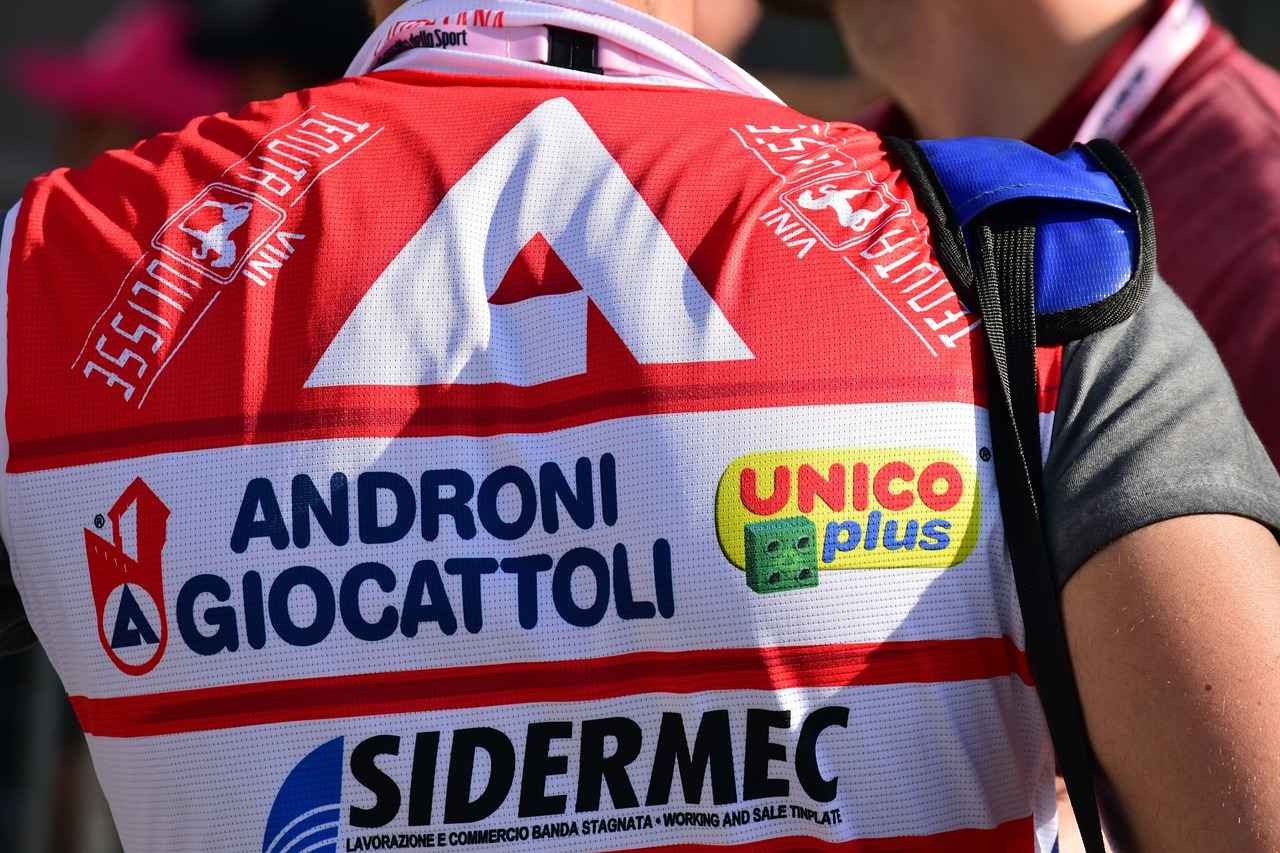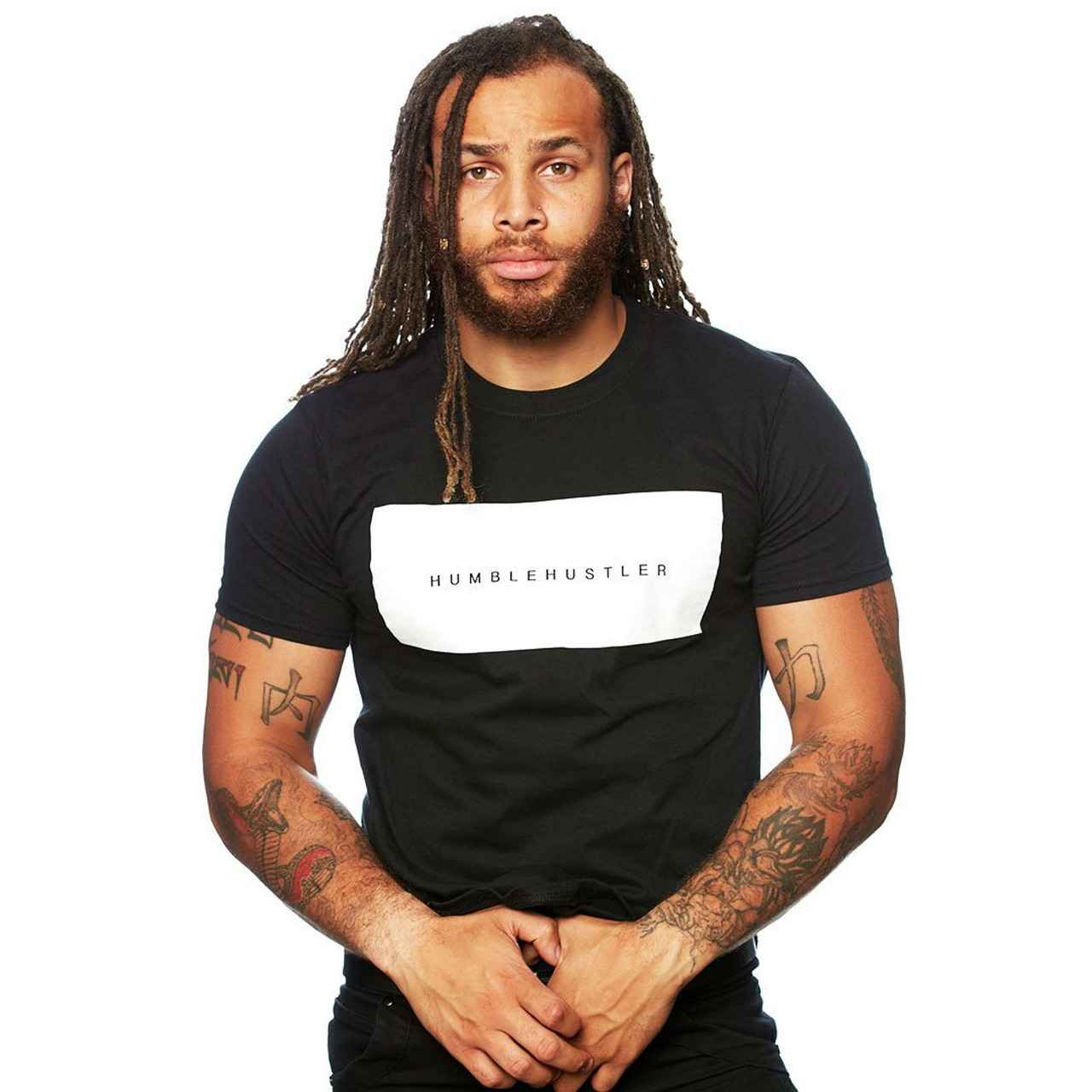This article delves into the essential steps and strategies necessary for creating unique custom t-shirts that effectively represent your brand, engage your audience, and drive sales.
Understanding Your Brand Identity
Establishing a clear brand identity is crucial for designing custom t-shirts. Begin by defining your brand’s values, mission, and target audience. This clarity will guide your design choices and ensure consistency across all marketing materials.
Choosing the Right T-Shirt Material
Selecting the appropriate fabric for your custom t-shirts can significantly impact comfort and durability. Consider the following materials:
- Cotton: Known for its softness and breathability, ideal for everyday wear.
- Polyester: Offers durability and moisture-wicking properties, perfect for athletic wear.
- Blends: Combining different fabrics can enhance comfort and performance.
Designing the Perfect Graphic
Creating an eye-catching graphic is essential for your custom t-shirt. Tips for designing graphics include:
- Choosing Colors Wisely: Select colors that align with your brand and attract attention.
- Typography and Fonts: Use legible fonts that complement your overall design.
Selecting the Right Printing Method
Understanding different printing techniques is crucial for achieving the best results. Consider these popular methods:
- Screen Printing: Known for its durability and vibrant colors.
- Direct-to-Garment (DTG) Printing: Ideal for high-resolution designs and small runs.
Setting Up Your Online Store
Once your designs are ready, setting up an online store is the next step. Evaluate popular e-commerce platforms like Shopify and Etsy, and create engaging product pages with compelling descriptions and high-quality images.
Marketing Your Custom T-Shirts
Effective marketing strategies are essential for reaching your target audience. Leverage social media platforms and consider collaborating with influencers to expand your reach.
Measuring Success and Gathering Feedback
After launching your custom t-shirts, measuring success and gathering customer feedback is crucial. Use analytics tools to gain insights into your sales and customer behavior, and encourage reviews to improve your products.
Conclusion: Bringing Your Vision to Life
In conclusion, designing custom t-shirts requires careful planning and execution. By following these steps, you can create products that effectively represent your brand and resonate with your audience.

Understanding Your Brand Identity
Establishing a clear brand identity is essential when it comes to designing custom t-shirts. Your brand identity encompasses the core values, mission, and target audience that define your business. This section will guide you through the critical steps to effectively articulate your brand identity, ensuring that your custom t-shirts resonate with your audience and communicate your brand’s essence.
Defining Your Brand Values
Your brand values are the guiding principles that shape your business’s culture and decision-making processes. To define your brand values, consider the following:
- Identify Core Principles: What beliefs or ideals drive your business? This could include sustainability, community, creativity, or innovation.
- Reflect on Your Mission: What is the purpose of your brand? Your mission statement should succinctly convey what you aim to achieve and how you want to impact your audience.
- Engage Your Team: Involve your team in discussions about brand values to ensure that everyone is aligned and committed to the same vision.
Understanding Your Target Audience
Knowing your target audience is vital for designing t-shirts that appeal to them. Conduct market research to gather insights about:
- Demographics: Age, gender, location, and income levels can influence design choices.
- Interests and Preferences: What hobbies or trends resonate with your audience? Tailoring your designs to their preferences can enhance engagement.
- Feedback Mechanisms: Utilize surveys or social media polls to gather direct feedback from your audience about their preferences and expectations.
By clearly defining your brand values and understanding your target audience, you can create custom t-shirts that not only look great but also effectively communicate your brand’s message. This foundational work sets the stage for successful designs that resonate deeply with your customers.

Choosing the Right T-Shirt Material
is a critical aspect of designing custom t-shirts that not only look great but also feel comfortable and last longer. The fabric you select can make a significant difference in how your t-shirts perform in various settings, whether for casual wear, sports, or promotional events.
When it comes to t-shirt materials, there are several options available, each with its own unique properties and benefits. Here, we will explore the most popular fabrics and help you understand their advantages to make an informed decision.
| Fabric Type | Benefits | Best For |
|---|---|---|
| Cotton | Soft, breathable, and hypoallergenic. | Everyday wear and casual branding. |
| Polyester | Durable, moisture-wicking, and quick-drying. | Athletic wear and outdoor events. |
| Blends | Combines the benefits of different fabrics. | Versatile uses, including fashion and comfort. |
| Specialty Fabrics | Unique textures and performance features. | Fashion-forward designs and niche markets. |
Cotton is often the go-to choice for many due to its softness and breathability. It is perfect for casual wear and is gentle on the skin, making it ideal for everyday use. However, it may not be the best option for high-intensity activities as it tends to retain moisture.
On the other hand, polyester is known for its durability and moisture-wicking properties, making it a fantastic choice for athletic wear. It dries quickly and can withstand rigorous washing, ensuring your designs remain vibrant over time.
Consider blended fabrics, which combine the best features of cotton and polyester. These blends offer a balance of comfort and durability, making them suitable for various applications. Lastly, explore specialty fabrics that can elevate your t-shirt design, offering unique textures and performance features that cater to specific audiences.
In conclusion, understanding the different fabric options available for your custom t-shirts is essential for achieving the right balance of comfort, durability, and style. By carefully selecting the material that aligns with your brand’s purpose and target audience, you can create t-shirts that not only look great but also provide a memorable wearing experience.
Cotton vs. Polyester
When it comes to selecting the right fabric for custom t-shirts, understanding the differences between cotton and polyester is essential. Each material has unique properties that affect comfort, breathability, and the printing techniques suitable for them.
| Feature | Cotton | Polyester |
|---|---|---|
| Comfort | Soft and gentle against the skin, ideal for casual wear. | Can feel less soft but offers a smooth texture that some prefer. |
| Breathability | Highly breathable, making it suitable for warm weather. | Less breathable, but newer technologies have improved its ventilation. |
| Durability | Durable but can wear out faster than polyester. | Highly durable and resistant to shrinking and stretching. |
| Moisture-Wicking | Absorbs moisture but can feel damp. | Excellent moisture-wicking properties, keeping you dry during activities. |
| Printing Techniques | Great for screen printing and direct-to-garment (DTG) printing. | Best suited for sublimation printing, producing vibrant designs. |
Comfort is a significant factor when choosing between cotton and polyester. Cotton is known for its softness and natural feel, making it a popular choice for everyday clothing. On the other hand, polyester is often favored for its durability and moisture-wicking capabilities, which are particularly beneficial for athletic wear.
In terms of breathability, cotton excels, allowing air to circulate and keeping the wearer cool. Polyester, while less breathable, has seen advancements that enhance its airflow. When it comes to printing techniques, cotton is versatile, supporting a range of methods, whereas polyester shines with sublimation printing, allowing for high-quality, vibrant designs.
Ultimately, the choice between cotton and polyester will depend on your specific needs, whether it’s for comfort, durability, or printing quality.
Benefits of Cotton T-Shirts
Cotton t-shirts are a staple in many wardrobes, celebrated for their softness and breathability. These qualities make them an excellent choice for both everyday wear and casual branding. In this section, we will delve into the numerous advantages that cotton t-shirts offer, making them a preferred option for consumers and brands alike.
- Comfort: Cotton is a natural fiber that feels soft against the skin, providing a level of comfort that synthetic materials often cannot match. This makes cotton t-shirts ideal for all-day wear, whether you’re at home, running errands, or attending a casual gathering.
- Breathability: The breathability of cotton helps to regulate body temperature, allowing air to circulate freely. This feature is particularly beneficial during warmer months, as it helps to keep the wearer cool and dry.
- Durability: While cotton is soft, it is also known for its strength. High-quality cotton t-shirts can withstand numerous washes and wear, maintaining their shape and color over time. This durability makes them a cost-effective choice for both consumers and businesses.
- Versatility: Cotton t-shirts can be easily styled for various occasions. They can be paired with jeans for a casual look or dressed up with a blazer for a more polished appearance. This versatility makes them suitable for a wide range of audiences.
- Eco-Friendly: When sourced responsibly, cotton is a renewable resource. Organic cotton options are available, which are grown without harmful pesticides and chemicals, making them a more sustainable choice for environmentally-conscious consumers.
In conclusion, the benefits of cotton t-shirts extend beyond mere comfort. Their durability, breathability, and versatility make them an ideal choice for both personal wear and branding purposes. By choosing cotton, brands can offer products that not only appeal to consumers but also align with sustainable practices.
Advantages of Polyester T-Shirts
When it comes to selecting materials for custom t-shirts, polyester stands out as a popular choice, especially for those looking to create apparel that can withstand the rigors of active lifestyles. Below are some of the key advantages that polyester t-shirts offer:
- Durability: Polyester is known for its strength and resistance to wear and tear. This makes it an excellent choice for garments that are intended to be worn frequently or during physical activities.
- Moisture-Wicking Properties: One of the standout features of polyester is its ability to wick moisture away from the body. This is particularly beneficial for athletes and outdoor enthusiasts, as it helps keep the wearer dry and comfortable during intense activities.
- Quick Drying: Unlike cotton, which can take a long time to dry, polyester dries quickly. This makes it ideal for outdoor events where the weather may be unpredictable.
- Color Retention: Polyester holds dye well, which means that colors remain vibrant even after multiple washes. This is crucial for custom designs that need to maintain their visual appeal over time.
- Lightweight and Breathable: Polyester t-shirts are typically lightweight, providing ease of movement. They also have good breathability, which helps regulate body temperature during physical exertion.
- Easy Care: Polyester is generally easy to care for, as it is resistant to wrinkles and shrinking. This convenience appeals to busy individuals who prefer low-maintenance clothing.
In summary, polyester t-shirts are an excellent option for anyone looking to combine style, comfort, and functionality. Whether for sports, outdoor activities, or casual wear, their numerous benefits make them a worthwhile investment for custom apparel.
Blends and Specialty Fabrics
play a pivotal role in enhancing the quality and appeal of custom t-shirts. When designing custom apparel, the choice of fabric can significantly influence not only the look and feel of the t-shirt but also its functionality and durability.
Blended fabrics, which typically combine natural and synthetic fibers, offer a range of benefits. For instance, a cotton-polyester blend provides the softness and breathability of cotton along with the durability and wrinkle-resistance of polyester. This combination makes it an excellent choice for everyday wear, ensuring that the t-shirts maintain their shape and comfort even after multiple washes.
Moreover, specialty materials such as moisture-wicking fabrics are ideal for athletic wear. These fabrics are designed to draw moisture away from the body, keeping the wearer cool and dry during physical activities. This feature is particularly appealing for brands targeting fitness enthusiasts or outdoor adventurers.
Another consideration is the use of eco-friendly fabrics. With a growing emphasis on sustainability, many consumers are seeking out brands that offer organic cotton or recycled polyester options. Using these materials not only appeals to environmentally-conscious customers but also enhances your brand’s image as a responsible choice.
| Fabric Type | Benefits |
|---|---|
| Cotton | Soft, breathable, and comfortable for everyday wear |
| Polyester | Durable, moisture-wicking, and wrinkle-resistant |
| Cotton-Polyester Blend | Combines the best of both worlds for comfort and durability |
| Eco-Friendly Fabrics | Sustainable options that appeal to environmentally-conscious consumers |
In conclusion, selecting the right blend or specialty fabric for your custom t-shirts can significantly enhance their overall quality and marketability. By considering the specific needs of your target audience and the functional properties of different fabrics, you can create t-shirts that not only look great but also perform well, ultimately driving sales and brand loyalty.

Designing the Perfect Graphic
Creating an eye-catching graphic is essential for your custom t-shirt. A well-designed graphic not only attracts attention but also resonates with your audience and reflects your brand identity. Here are some key tips to help you design graphics that make a lasting impression.
- Understand Your Audience: Before starting your design, consider who your target audience is. What are their interests, preferences, and values? Tailoring your graphic to meet their expectations will enhance engagement and connection.
- Incorporate Brand Elements: Use colors, logos, and fonts that align with your brand identity. This consistency helps in building brand recognition and trust among your customers.
- Keep It Simple: A cluttered design can be overwhelming. Aim for simplicity and clarity, ensuring that your message is easily understood at a glance.
- Utilize High-Quality Images: If your design includes images, ensure they are high-resolution. Blurry or pixelated images can detract from the overall quality of your t-shirt.
- Experiment with Layout: Play around with different layouts to find what works best. Balance text and images to create a visually appealing design that draws the eye.
- Choose Colors Wisely: Color selection is crucial in graphic design. Use a color palette that reflects your brand and evokes the desired emotional response from your audience.
- Test Your Design: Before finalizing your graphic, seek feedback from peers or potential customers. Their insights can help you make necessary adjustments to improve the design.
By following these tips, you can create a graphic that not only looks great but also effectively communicates your brand message. Remember, the goal is to create a design that resonates with your audience and stands out in a crowded market.
Choosing Colors Wisely
is a fundamental aspect of designing custom t-shirts that not only represent your brand but also attract attention and resonate with your target audience. The colors you select can evoke emotions, convey messages, and significantly influence purchasing decisions. In this section, we will explore how to effectively choose colors that align with your brand identity and appeal to your customers.
- Understand Color Psychology: Different colors evoke different emotions. For example, red can signify passion and energy, while blue often represents trust and calmness. Understanding these associations can help you select colors that resonate with your brand’s message.
- Align with Your Brand Identity: Your color choices should reflect your brand’s values and personality. If your brand is fun and youthful, consider using bright and vibrant colors. Conversely, if your brand is more sophisticated, muted and elegant tones may be more appropriate.
- Consider Your Target Audience: Different demographics respond to colors in various ways. Conducting research on your target audience can provide insights into color preferences that can influence their buying behavior.
- Use Color Combinations Effectively: A well-thought-out color palette can enhance your design. Use complementary colors to create a visually appealing look, or opt for monochromatic schemes for a more cohesive appearance.
- Test and Iterate: Before finalizing your color choices, consider creating mock-ups or prototypes. Gather feedback from potential customers to see which colors resonate best.
In conclusion, choosing the right colors for your custom t-shirts is crucial for creating designs that not only attract attention but also effectively communicate your brand’s identity. By understanding color psychology, aligning with your brand values, and considering your audience, you can make informed decisions that enhance your t-shirt designs.
Typography and Fonts
The importance of typography in design cannot be overstated. It serves as a visual representation of your brand’s voice and can significantly influence how your message is perceived. In this section, we will explore how to choose the right fonts that not only enhance legibility but also align with your overall aesthetic.
Understanding Font Categories
- Serif Fonts: These fonts have small lines or strokes at the ends of letters. They are often seen as traditional and are great for conveying a sense of reliability.
- Sans-Serif Fonts: Clean and modern, sans-serif fonts lack the extra embellishments of serif fonts. They are typically easier to read on screens, making them ideal for digital content.
- Script Fonts: These fonts mimic handwriting and can add a personal touch to your design. However, they should be used sparingly to avoid compromising legibility.
- Display Fonts: Often used for headlines and titles, these fonts are designed to grab attention. They can be fun and creative but may not be suitable for body text.
Choosing Legible Fonts
When selecting fonts, prioritize legibility. A good rule of thumb is to ensure that your text can be read easily from a distance. Aim for a font size that is comfortable for your audience, and avoid overly decorative fonts that may hinder readability.
Complementing Your Aesthetic
Your font choices should also reflect your brand’s personality. For example, a tech company might opt for sleek, modern fonts, while a vintage clothing brand might choose more classic, ornate fonts. Consider the emotions you want to evoke and select fonts that resonate with those feelings.
Combining Fonts Effectively
Using multiple fonts can create visual interest, but it’s essential to maintain harmony. A common practice is to pair a serif font with a sans-serif font to create contrast while ensuring that both fonts complement each other. Limit your design to two or three fonts to keep it cohesive.
Conclusion
In summary, typography is a powerful tool in design that can enhance your message and engage your audience. By understanding font categories, prioritizing legibility, and ensuring that your font choices align with your brand’s aesthetic, you can create impactful designs that resonate with your target market.

Selecting the Right Printing Method
When it comes to creating custom t-shirts for your brand, is a pivotal step that can greatly influence the final product’s quality, appearance, and overall effectiveness. Each printing technique has its unique advantages and is suited for different types of designs and materials. In this section, we will explore three of the most popular printing methods: screen printing, direct-to-garment (DTG), and heat transfer.
Screen printing remains one of the most widely used methods for custom t-shirt production. This technique involves creating a stencil (or screen) for each color in the design, which allows for vibrant and long-lasting prints. One of the key benefits of screen printing is its ability to produce high volumes at a lower cost per unit, making it ideal for bulk orders. Additionally, screen printing works well on a variety of fabrics and can achieve rich colors that stand out.
DTG printing is a modern method that uses inkjet technology to print designs directly onto the fabric. This technique is perfect for intricate designs and allows for unlimited color options. DTG is especially advantageous for small runs or one-off designs, as it eliminates the need for screens and setup costs. However, it is important to note that DTG printing may not be as durable as screen printing, especially on darker fabrics.
Heat transfer printing involves printing a design onto a special transfer paper, which is then applied to the fabric using heat and pressure. This method is highly versatile and allows for detailed and colorful designs. It is particularly useful for small orders and personal projects. However, heat transfer prints may not be as durable as screen printed designs and can fade or crack over time, especially with frequent washing.
In conclusion, understanding the differences between these printing methods is essential for making informed decisions when designing custom t-shirts. Each technique has its strengths and weaknesses, and the best choice will depend on your specific needs, budget, and design requirements. By carefully considering these factors, you can achieve outstanding results that truly represent your brand.
Screen Printing Explained
Screen printing is a time-honored technique that has stood the test of time, celebrated for its durability and the vibrant colors it produces. This method, also known as silk screening, involves transferring ink through a mesh screen onto a substrate, typically fabric. Understanding how screen printing works can help you decide when to use it for your custom designs.
The process begins with creating a stencil, or screen, which is used to block out areas where ink should not pass through. The screen is then placed on the fabric, and ink is applied using a squeegee, forcing the ink through the open areas of the screen. This allows for precise and consistent application of the design, making it a preferred choice for many businesses and artists.
One of the main advantages of screen printing is its ability to produce bold and vibrant colors. Unlike some other printing methods, screen printing can achieve rich hues and is particularly effective for designs with fewer colors. This makes it ideal for logos, graphics, and text that need to stand out.
Additionally, screen printing is known for its long-lasting results. The ink used in this process is thicker than that used in other methods, which contributes to its durability. Screen-printed designs can withstand multiple washes without fading or cracking, making them suitable for apparel that sees regular use.
However, screen printing is best suited for larger production runs. The setup process can be time-consuming and costly for small orders, as each color requires a separate screen. Therefore, if you are planning to print a large number of t-shirts or other items, screen printing is an excellent choice. For smaller quantities or highly detailed designs, consider alternatives like Direct-to-Garment (DTG) printing.
In conclusion, understanding the mechanics and advantages of screen printing can help you make informed decisions about your custom designs. Whether you’re creating promotional items for your brand or unique apparel for an event, screen printing offers a reliable and visually appealing option.
Direct-to-Garment (DTG) Printing
is an innovative printing method that allows for high-resolution designs to be printed directly onto fabric. This technique has gained immense popularity in the custom apparel industry, especially for businesses that require small production runs or intricate designs.
One of the primary advantages of DTG printing is its ability to produce vibrant and detailed images. Unlike traditional methods, DTG utilizes specialized inkjet technology, which means that designs can be printed with a wide range of colors and gradients, making it ideal for complex graphics. Additionally, this method eliminates the need for screens or plates, resulting in lower setup costs and faster turnaround times.
DTG printing is also highly versatile. It works well on various fabric types, particularly 100% cotton, which enhances the print quality. This flexibility allows businesses to cater to diverse customer preferences, whether they are looking for casual wear or promotional items.
However, it is essential to consider the limitations of DTG printing. While it excels in small runs, the cost per unit can be higher compared to bulk screen printing. Furthermore, the durability of DTG prints may not match that of screen-printed designs, particularly when it comes to heavy washing and wear. Therefore, it is crucial for businesses to weigh these factors when deciding on a printing method.
In conclusion, DTG printing offers a unique blend of quality and convenience, making it an excellent choice for brands looking to create custom t-shirts with intricate designs. By understanding both its advantages and limitations, businesses can make informed decisions that align with their production needs and customer expectations.

Setting Up Your Online Store
Once your designs are ready, the next crucial step is establishing an online store to showcase and sell your custom t-shirts. This section will guide you through selecting the right e-commerce platform and implementing best practices to ensure a successful online retail experience.
Choosing the Right E-Commerce Platform
When it comes to selling custom t-shirts, selecting the appropriate e-commerce platform is essential. Popular options include:
- Shopify: Known for its user-friendly interface and extensive app ecosystem, Shopify is ideal for businesses of all sizes.
- Etsy: A great choice for handmade and unique items, Etsy allows you to tap into a niche market.
- WooCommerce: Perfect for those who already have a WordPress site, WooCommerce offers flexibility and customization.
Each platform has its unique features, so consider your business needs and budget when making a decision.
Creating an Engaging Product Page
Your product page is where potential customers will decide whether to purchase your t-shirts. To create a compelling product page, keep the following tips in mind:
- High-Quality Images: Use clear, high-resolution images that showcase your t-shirts from multiple angles.
- Compelling Descriptions: Write engaging descriptions that highlight the unique aspects of your designs and the materials used.
- Customer Reviews: Encourage buyers to leave reviews, as positive feedback can significantly influence new customers.
Optimizing for SEO
To drive traffic to your online store, it’s vital to optimize your product pages for search engines. Use relevant keywords in your product titles and descriptions, and ensure your site is mobile-friendly.
Conclusion
Setting up your online store is a pivotal step in your journey to sell custom t-shirts. By choosing the right e-commerce platform and creating engaging product pages, you can effectively reach your target audience and boost your sales.
Choosing an E-Commerce Platform
Choosing the Right E-Commerce Platform is a critical step for any business looking to establish an online presence. With numerous options available, it’s essential to evaluate popular platforms like Shopify and Etsy to determine which one best meets your needs.
Both platforms offer unique features catering to different types of sellers. Below, we delve into their characteristics to help you make an informed decision.
| Feature | Shopify | Etsy |
|---|---|---|
| Target Audience | Businesses of all sizes, particularly those looking for a customizable store | Artisans and crafters selling handmade or vintage items |
| Ease of Use | User-friendly interface with extensive customization options | Simple setup, but limited customization |
| Fees | Monthly subscription plus transaction fees | Listing fees and transaction fees |
| Payment Options | Multiple payment gateways supported | Primarily PayPal and Etsy Payments |
| Marketing Tools | Built-in SEO features, email marketing, and social media integrations | Limited marketing tools, relies on Etsy’s marketplace |
When considering which platform to choose, ask yourself the following questions:
- What type of products do you intend to sell?
- How much control do you want over your store’s design?
- What is your budget for monthly fees and transaction costs?
- How important are marketing tools for your sales strategy?
In conclusion, both Shopify and Etsy have their strengths and weaknesses. If you prioritize customization and scalability, Shopify may be the better choice. However, if you are a small-scale artisan looking for a straightforward way to reach customers, Etsy could be ideal. Analyze your business needs and goals to select the platform that aligns best with your vision.
Creating an Engaging Product Page
is essential for any online business, especially when it comes to selling custom products like t-shirts. A well-crafted product page not only showcases your items but also plays a crucial role in influencing purchasing decisions. Here are some effective strategies to enhance your product pages.
- Compelling Product Descriptions: Write engaging descriptions that highlight the unique features of your t-shirts. Focus on the benefits rather than just the specifications. Use persuasive language that resonates with your target audience, emphasizing how the product can meet their needs.
- High-Quality Images: Invest in professional photography to showcase your t-shirts. Use multiple angles and include close-ups to capture details. Images should be clear and vibrant, allowing potential buyers to visualize the product accurately.
- Customer Reviews: Incorporate a section for customer testimonials to build trust. Positive reviews can significantly influence potential buyers and enhance credibility.
- Clear Call-to-Action: Ensure that your call-to-action buttons (like “Add to Cart” or “Buy Now”) are prominent and easy to find. Use contrasting colors to make them stand out.
- Mobile Optimization: With many users shopping on mobile devices, make sure your product page is optimized for mobile viewing. This includes responsive design and fast loading times.
- SEO Best Practices: Optimize your product page for search engines by including relevant keywords in the title, descriptions, and image alt texts. This helps improve visibility and attract organic traffic.
By implementing these strategies, you can create a product page that not only attracts visitors but also converts them into customers. Remember, the goal is to provide a seamless shopping experience that encourages users to make a purchase.

Marketing Your Custom T-Shirts
Effective marketing strategies are crucial for successfully reaching and engaging your target audience when it comes to promoting your custom t-shirts. In this section, we will explore various tactics, including social media marketing, influencer partnerships, and other innovative approaches to enhance your brand visibility and drive sales.
Social media platforms like Instagram, Facebook, and Pinterest provide an excellent opportunity to showcase your custom t-shirts. By creating visually appealing posts that highlight your designs, you can attract potential customers and encourage sharing. Consider using hashtags strategically to increase the reach of your posts and engage with a broader audience. For example, utilizing trending hashtags related to fashion, sustainability, or specific events can help your content gain traction.
In addition to organic social media efforts, collaborating with influencers can significantly amplify your marketing efforts. Partnering with influencers who align with your brand values allows you to tap into their established audience. When choosing influencers, look for those with a genuine interest in your products and a following that matches your target demographic. This collaboration can take various forms, such as sponsored posts, giveaways, or even co-designing a limited edition t-shirt line.
Moreover, consider implementing email marketing campaigns to reach out to your existing customer base and potential leads. Craft engaging newsletters that showcase new designs, upcoming sales, or exclusive offers. This direct line of communication can help maintain customer interest and encourage repeat purchases.
Lastly, don’t underestimate the power of offline marketing. Participate in local events, fairs, or markets where you can showcase your custom t-shirts in person. This face-to-face interaction can create a lasting impression and foster a sense of community around your brand.
In conclusion, by leveraging a mix of social media, influencer marketing, and traditional marketing strategies, you can effectively promote your custom t-shirts and reach your target audience. Experiment with different tactics, track your results, and refine your approach to ensure ongoing success.
Leveraging Social Media
In today’s digital landscape, social media platforms have emerged as powerful tools for promoting your custom t-shirts. With billions of users actively engaging on platforms like Instagram, Facebook, and TikTok, understanding how to create engaging content is essential for connecting with your audience and driving sales.
Creating Engaging Content
To effectively leverage social media, start by developing content that resonates with your audience. This includes:
- Visual Appeal: Use high-quality images of your custom t-shirts. Showcase them in different settings to highlight their versatility.
- Storytelling: Share the story behind your brand and the inspiration for your designs. Authenticity can create a deeper connection with your audience.
- User-Generated Content: Encourage customers to share photos of themselves wearing your t-shirts. Reposting this content not only builds community but also acts as social proof.
Utilizing Hashtags
Hashtags are crucial for increasing the visibility of your posts. Research trending hashtags related to fashion and custom apparel, and incorporate them into your posts to reach a wider audience. Consider creating a unique hashtag for your brand to encourage engagement.
Engaging with Your Audience
Interaction is key in social media marketing. Respond to comments and messages promptly. Host giveaways or contests to encourage participation and excitement around your brand. Engaging with your audience builds loyalty and encourages repeat purchases.
Measuring Success
Utilize analytics tools provided by social media platforms to track engagement, reach, and conversion rates. This data can help you refine your strategy and understand what types of content resonate best with your audience.
In conclusion, by leveraging social media effectively, you can create a dynamic presence for your custom t-shirts, engage your audience, and ultimately drive sales. Remember, the key is to be authentic, interactive, and visually appealing in your content creation.
Collaborating with Influencers
In today’s digital landscape, influencer partnerships have emerged as a powerful strategy for brands aiming to expand their reach and connect with targeted audiences. By leveraging the credibility and following of influencers, businesses can effectively promote their products and services in a more authentic manner.
Identifying the Right Influencers
The first step in successful influencer collaboration is identifying the right influencers who align with your brand values and target audience. Consider the following:
- Niche Relevance: Look for influencers who specialize in your industry or niche. Their audience will likely be more interested in your offerings.
- Engagement Rate: Analyze the engagement metrics of potential influencers. A high number of likes and comments often indicates a more active and interested audience.
- Authenticity: Choose influencers who genuinely resonate with your brand. Their authentic endorsement can significantly enhance your credibility.
Building a Collaborative Relationship
Once you have identified potential influencers, the next step is to reach out and build a collaborative relationship. Here are some tips:
- Personalized Outreach: Craft personalized messages that highlight why you admire their work and how a partnership could be mutually beneficial.
- Clear Expectations: Clearly outline what you expect from the collaboration, including deliverables, timelines, and compensation.
- Creative Freedom: Allow influencers the creative freedom to present your brand in their unique style. This authenticity can result in more engaging content.
Measuring the Impact of Influencer Collaborations
After launching your influencer campaigns, it’s essential to measure their impact. Utilize analytics tools to track metrics such as:
- Website Traffic: Monitor any increases in traffic to your website from influencer links.
- Sales Conversions: Assess how many sales can be attributed to the influencer’s promotion.
- Social Media Engagement: Evaluate engagement on your social media platforms after the collaboration.
In conclusion, collaborating with influencers can significantly enhance your brand’s visibility and engagement. By carefully selecting the right partners and fostering genuine relationships, your brand can thrive in a competitive marketplace.

Measuring Success and Gathering Feedback
After launching your custom t-shirts, it is crucial to measure success and gather customer feedback to ensure your brand is on the right track. This section will explore various tools and metrics that can help you evaluate your performance effectively.
To start, utilizing analytics tools can provide valuable insights into your sales performance and customer behavior. Platforms like Google Analytics or Shopify Analytics allow you to track visitor data, conversion rates, and sales trends. By analyzing this data, you can identify which designs resonate most with your audience and adjust your marketing strategies accordingly.
Another important aspect of measuring success is setting clear key performance indicators (KPIs). These could include metrics such as:
- Sales Volume: The total number of t-shirts sold over a specific period.
- Customer Acquisition Cost: The cost associated with acquiring a new customer.
- Return on Investment (ROI): The profit generated from your marketing efforts compared to the cost incurred.
In addition to quantitative metrics, customer reviews are invaluable for gaining insights into your products. Encouraging customers to leave reviews can significantly influence potential buyers. You can create a post-purchase email campaign that prompts customers to share their thoughts and experiences. This feedback can help you identify areas for improvement and enhance your product offerings.
Moreover, conducting surveys can provide deeper insights into customer satisfaction. Tools like SurveyMonkey or Google Forms can be used to gather feedback on various aspects of your t-shirts, such as design, fit, and fabric quality. This information is critical for making informed decisions about future designs and marketing strategies.
In conclusion, measuring success and gathering feedback are essential processes for any custom t-shirt business. By leveraging analytics tools, setting KPIs, encouraging reviews, and conducting surveys, you can gain a comprehensive understanding of your market position and customer preferences. This knowledge will ultimately help you refine your offerings and drive sales effectively.
Using Analytics Tools
In today’s competitive market, analytics tools have become indispensable for businesses aiming to enhance their understanding of sales dynamics and customer behavior. By utilizing these tools effectively, companies can gain a wealth of insights that inform their strategic decisions.
Understanding Customer Behavior
Analytics tools provide a detailed view of how customers interact with your brand. This includes tracking website visits, monitoring purchase patterns, and analyzing customer demographics. By understanding these behaviors, businesses can tailor their marketing strategies to better meet the needs of their target audience.
Measuring Sales Performance
Another critical aspect of analytics is its ability to measure sales performance. By examining metrics such as conversion rates, average order value, and customer retention rates, businesses can identify what’s working and what isn’t. This data-driven approach allows for informed adjustments to sales strategies, ultimately leading to improved profitability.
Identifying Trends and Opportunities
Analytics tools also help in identifying emerging trends and opportunities within the market. By analyzing historical data and current market conditions, businesses can spot seasonal trends and shifts in consumer preferences. This foresight enables companies to adapt their offerings and marketing efforts accordingly, ensuring they stay ahead of the competition.
Leveraging Data for Targeted Marketing
With the insights gained from analytics, businesses can implement targeted marketing campaigns that resonate with specific customer segments. This not only enhances customer engagement but also improves the effectiveness of marketing spend.
Conclusion
In conclusion, leveraging analytics tools is essential for any business looking to thrive in today’s marketplace. By understanding customer behavior, measuring sales performance, identifying trends, and implementing targeted marketing strategies, companies can unlock significant growth potential.
Encouraging Customer Reviews
In today’s competitive market, customer reviews play a pivotal role in shaping purchasing decisions. Positive reviews can enhance your brand’s credibility and attract new customers, while negative feedback offers opportunities for improvement. To harness the power of customer reviews, consider implementing the following strategies:
- Request Feedback Actively: After a purchase, send a follow-up email to customers encouraging them to share their experiences. A simple request can prompt them to leave a review.
- Incentivize Reviews: Offer discounts or loyalty points in exchange for honest reviews. This not only motivates customers to provide feedback but also fosters a sense of appreciation.
- Make it Easy: Simplify the review process by providing direct links to review platforms. The easier it is for customers to leave feedback, the more likely they are to do so.
- Showcase Reviews: Highlight positive reviews on your website and social media. This not only builds trust with potential customers but also encourages others to share their experiences.
- Respond to Reviews: Engage with customers by responding to their reviews, whether positive or negative. This shows that you value their feedback and are committed to improving your products.
Utilizing customer feedback effectively can lead to significant improvements in your products and services. Analyze the reviews to identify common themes or areas for enhancement. This information can guide your product development and marketing strategies.
Additionally, consider incorporating customer testimonials into your marketing materials. Authentic testimonials can resonate with potential buyers, making them more likely to trust your brand and make a purchase.
In conclusion, encouraging customer reviews is not just about gathering feedback; it’s about building a community around your brand. By actively seeking and responding to customer insights, you can foster loyalty, improve your offerings, and ultimately drive sales.

Conclusion: Bringing Your Vision to Life
In the realm of custom t-shirt design, successful execution is paramount. The journey begins with a clear understanding of your brand’s identity, which serves as the foundation for your design choices. By defining your brand’s values, mission, and target audience, you can ensure that your t-shirts effectively communicate your message and resonate with potential customers.
Next, selecting the right materials is crucial. The fabric you choose can greatly influence not only the comfort and durability of your t-shirts but also the overall perception of your brand. For instance, cotton is often preferred for its softness, while polyester is favored for its moisture-wicking properties, making it ideal for athletic wear.
When it comes to the design aspect, creating an eye-catching graphic is essential. Thoughtful color selection and typography can enhance your design’s impact, ensuring it captures attention and conveys your brand’s essence. Additionally, understanding various printing techniques, such as screen printing and direct-to-garment (DTG) printing, will help you achieve the desired quality and longevity for your designs.
Once your designs are finalized, establishing an online store is the next step. Choosing the right e-commerce platform and creating an engaging product page can significantly boost your sales. High-quality images and compelling descriptions are vital in attracting customers and encouraging purchases.
Effective marketing strategies are equally important. Utilizing social media platforms and collaborating with influencers can broaden your reach and enhance brand visibility. Engaging content that resonates with your audience can drive traffic to your online store.
Finally, measuring your success through analytics and gathering customer feedback is essential for continuous improvement. By analyzing sales data and encouraging reviews, you can refine your offerings and better meet customer expectations.
In conclusion, the process of designing custom t-shirts is a multifaceted endeavor that requires careful planning and strategic execution. By following the outlined steps, you can create unique products that not only represent your brand effectively but also resonate deeply with your audience, ultimately driving sales and fostering brand loyalty.
Frequently Asked Questions
- What is the best material for custom t-shirts?
The best material really depends on your needs! Cotton is soft and breathable, perfect for casual wear, while polyester is durable and moisture-wicking, making it great for athletic gear. Blends can also offer unique benefits, so consider your audience and the purpose of the shirts.
- How do I design a graphic for my t-shirt?
Designing a graphic starts with understanding your brand! Choose colors that resonate with your audience and typography that’s easy to read. Use design tools or hire a professional to create something eye-catching that reflects your brand’s identity.
- What printing method should I choose?
It depends on your design and budget! Screen printing is great for bulk orders and offers vibrant colors, while Direct-to-Garment (DTG) printing is perfect for small runs with intricate designs. Evaluate the pros and cons of each method to find the right fit for your project.
- How can I effectively market my custom t-shirts?
Leverage social media to showcase your designs and engage with your audience! Collaborating with influencers can also expand your reach. Create compelling content that tells your brand story and encourages people to share your products.
- What should I include in my online store?
Your online store should have engaging product pages with high-quality images and detailed descriptions. Choose an e-commerce platform that fits your needs and make sure to optimize your product listings for search engines to attract more customers.












